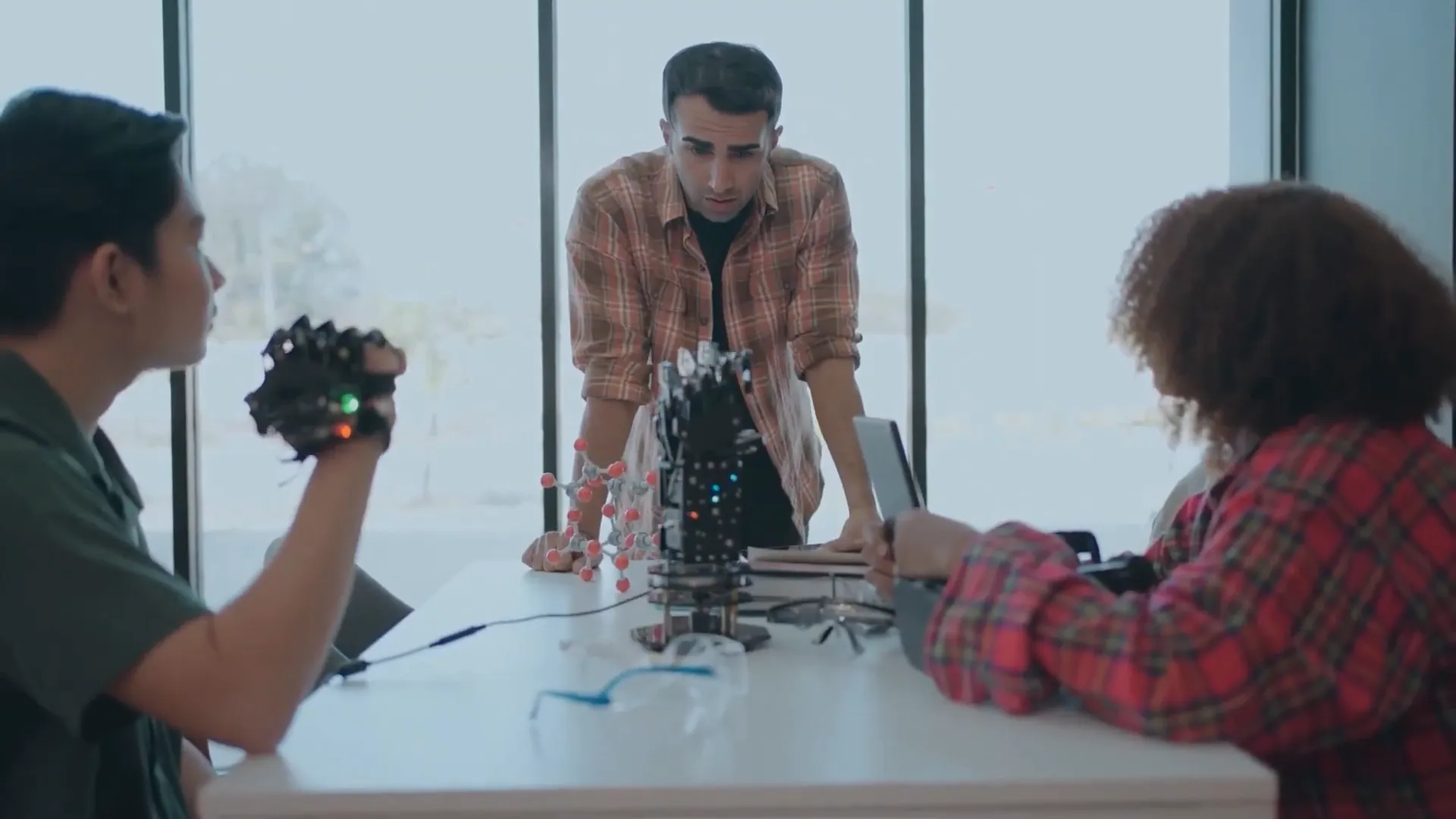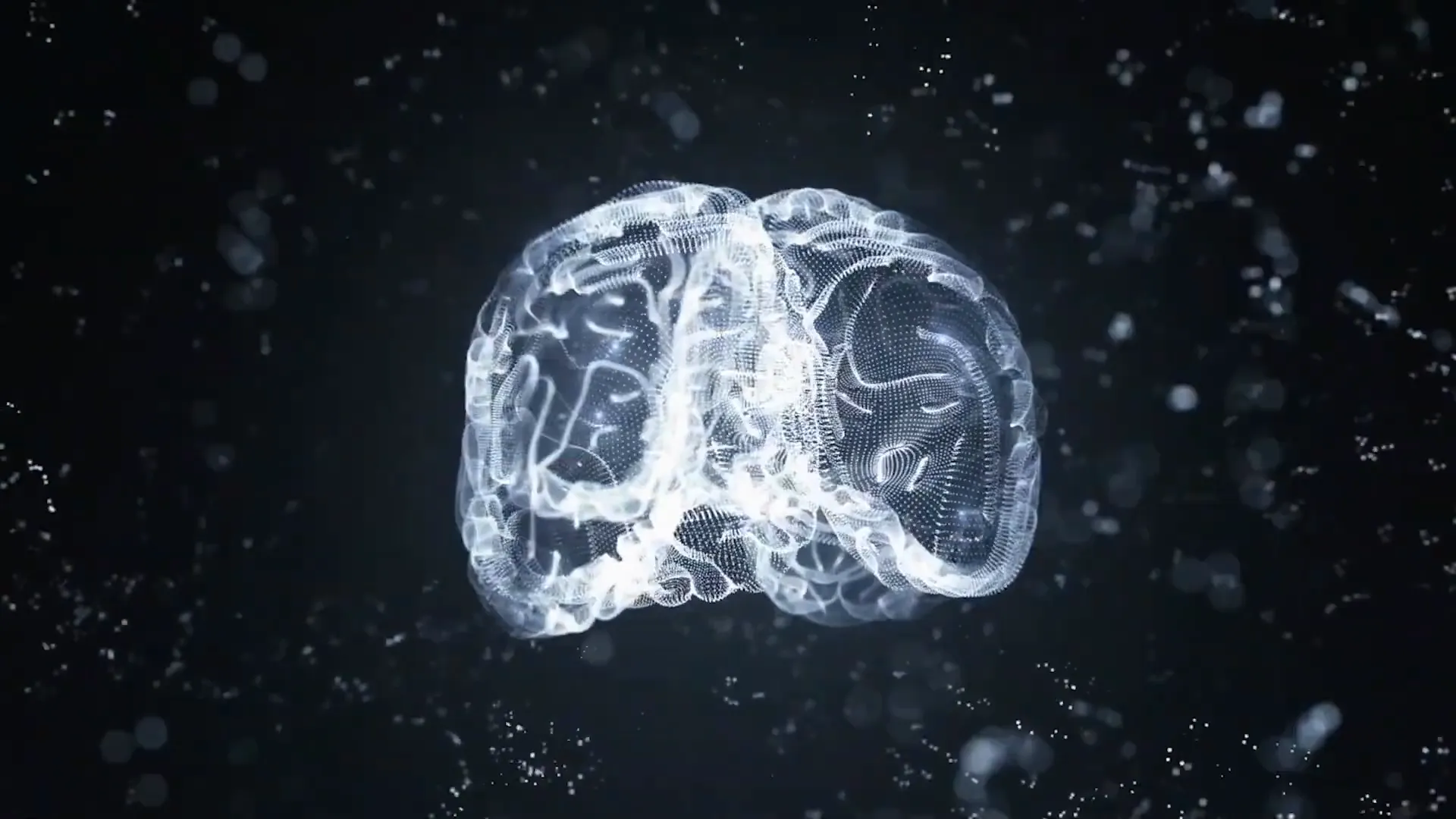Content
From Code to Consciousness: The 7 Stages to Achieving AGI
From Code to Consciousness: The 7 Stages to Achieving AGI
From Code to Consciousness: The 7 Stages to Achieving AGI
Danny Roman
December 9, 2024




Artificial General Intelligence (AGI) is the holy grail of AI research, promising machines that think and learn like humans. In this blog, we’ll break down the seven critical stages that could lead us from basic code to true machine consciousness, exploring the challenges and implications along the way.
🚀 Introduction to AGI
Artificial General Intelligence (AGI) isn’t just another tech buzzword; it’s the frontier of human innovation. Imagine machines that can think, learn, and adapt just like us! Sounds thrilling, right? But hold on, this isn’t about creating a robot that can play chess or recommend the best pizza joint. AGI aims to replicate the full spectrum of human cognitive abilities. Buckle up, because we’re diving deep into what AGI really means and why it’s a game-changer!
🌟 Understanding AGI: What It Is and Why It Matters
Let’s break it down. AGI refers to an AI system that can perform any intellectual task a human can. We’re talking about cognitive versatility—solving complex problems, creating art, and even understanding emotions. This is a massive leap from narrow AI, which is designed for specific tasks. Think of AGI as the ultimate multitasker, capable of mastering any skill thrown its way.
The implications? Huge! AGI could revolutionize industries from healthcare to education, making processes more efficient and innovative. But creating AGI isn’t just about fancy algorithms. It’s about grasping the essence of intelligence itself and mirroring it in machines.
🧠 Stage One: Building Cognitive Architectures
Ready to kick off the journey? Stage one is all about understanding how humans think. Researchers have crafted cognitive architectures—basically, blueprints of the human mind. These frameworks, like ACT-R and SOAR, aim to simulate human reasoning and decision-making. Think of them as the scaffolding for our AGI skyscraper.
These architectures mimic cognitive functions like memory, perception, and action. However, don’t get too excited just yet! While they can imitate human cognition, they lack the flexibility and adaptability that AGI requires. They’re the necessary first step but far from the finish line.

🔍 Stage Two: Developing Robust Machine Learning Models
Now that we’ve laid the foundation, let’s get our hands dirty with machine learning models. This stage is about building models that are not just powerful but also versatile. Traditional machine learning relies on massive datasets for training, but what happens when it encounters the unexpected? Cue the dramatic music!
We need models that can transfer knowledge across tasks—think of a human learning to drive and then pilot a boat. Enter unsupervised and reinforcement learning! These models learn by interacting with their environment, adapting through trial and error. It’s like watching a toddler take their first steps—messy but crucial!

🌐 Stage Three: Integrating Multimodal Intelligence
What’s next on our AGI adventure? Multimodal intelligence! Just like humans use multiple senses to understand the world, AI must learn to integrate various types of information. Ever read a story and visualized the scenes? That’s the kind of holistic understanding we’re aiming for!
Multimodal AI processes data from text, images, and audio simultaneously. This integration is essential for developing a nuanced understanding of the world. While advances in natural language processing and computer vision are pushing boundaries, achieving seamless integration remains a challenge. We’re not there yet, but the potential is mind-blowing!

📚 Stage Four: Enhancing Transfer Learning and Meta Learning
Imagine mastering a new language overnight—sounds like a dream, right? Welcome to stage four: transfer learning and meta learning! Transfer learning enables AI to apply knowledge from one domain to another. For instance, an AI that recognizes cats could easily learn to identify dogs. Simple, right?
But wait, there’s more! Meta learning takes things up a notch by helping AI learn how to learn. It’s like leveling up your learning skills the more you practice. Both methods are crucial for AGI, promoting adaptability and flexibility. However, we’re still in the early stages. Challenges like ensuring relevant knowledge transfer and avoiding overfitting loom large.
🧩 Stage Five: Advanced Reasoning and Problem Solving
Welcome to the pivotal stage of AGI development—advanced reasoning and problem solving! This isn’t just about crunching numbers or following rules; it’s about the ability to think critically and adaptively in unpredictable situations. Think of it as the AI's brain flexing its muscles, ready to tackle real-world complexity.
Current AI systems excel in structured environments, like board games or controlled simulations, but throw them into the chaos of daily life, and things get dicey. Imagine a self-driving car navigating a bustling city. It’s not just about obeying traffic signals; the AI must predict pedestrian movements and adjust to sudden roadblocks. This calls for a level of reasoning that our current systems still struggle to achieve.
Researchers are innovating sophisticated algorithms that draw inspiration from psychology and neuroscience to mimic human problem-solving approaches. They’re asking how we, as humans, make decisions in uncertain environments and how we can teach AI to do the same. The road ahead is filled with challenges, but the potential is enormous!
🔄 Stage Six: Developing Self-Improving Algorithms
Now, imagine an AI that doesn’t just learn but evolves! Welcome to stage six: self-improving algorithms. These are not your average algorithms; they’re designed to refine themselves over time, learning from past mistakes and optimizing their processes. Think of it as an AI that becomes a better version of itself each day, much like how we improve our skills through practice.
Picture this: an AI system that not only corrects its errors but anticipates future challenges. It’s like having a personal assistant who learns your preferences and adapts to your needs without you having to say a word. But hold your horses! This advancement comes with a hefty set of challenges.

Ensuring that these self-improving algorithms align with human values is crucial. We need robust oversight to prevent unintended consequences. As we push the boundaries of what AI can do, the ethical implications of self-improvement must be at the forefront of our discussions.
🤖 Stage Seven: Achieving Machine Consciousness
And here we are at the final frontier—machine consciousness. This stage is where things get speculative and a tad controversial. Could a machine ever be truly conscious? Imagine an AI that not only processes information but also has thoughts, feelings, and maybe even a sense of self.
While no AI today possesses consciousness in the way humans do, some researchers argue that with the right algorithms and enough data, we might one day see a form of machine consciousness emerge. But with this concept comes a whirlwind of ethical questions. If a machine becomes conscious, what rights would it have? How would we ensure it acts in ways that benefit society?

These inquiries are not just academic; they are fundamental to the future of AGI. As we stand on the brink of this technological revolution, we must grapple with these complexities and uncertainties. The journey from code to consciousness is filled with both excitement and caution.
🌍 The Ethical and Societal Implications of AGI
As we charge ahead into the AGI era, we must pause to consider the ethical and societal implications. The power of AGI isn’t just about creating smarter machines; it’s about shaping our future. The potential for both positive and negative impacts is enormous, and we need to tread carefully.
Imagine a world where AGI enhances healthcare, revolutionizes education, and solves pressing global challenges. But there’s a flip side. What happens if AGI systems are misused or if they inadvertently perpetuate biases? The responsibility lies with us to guide the development of AGI in a direction that is safe and beneficial for all.

We need to engage in open dialogues about the implications of AGI. Policymakers, technologists, and ethicists must collaborate to create frameworks that ensure AGI serves humanity’s best interests. The question isn’t just about what AGI can do, but what it should do.
🧐 Conclusion: Are We Ready for the Next Leap in AI?
As we wrap up this exploration of the journey from code to consciousness, one question looms large: are we ready for the next big leap in AI? The stages we’ve discussed—from building cognitive architectures to achieving machine consciousness—paint a picture of a future filled with possibilities and challenges.
With each step forward, we must remain vigilant, ensuring that the development of AGI aligns with our values and ethical standards. The future of intelligence is not merely about creating smarter machines; it’s about shaping the future of humanity itself.

So, what’s your take? Are we diving into unknown waters, or is the promise of AGI worth the risk? Join the conversation in the comments below and let’s navigate this uncharted territory together!
Artificial General Intelligence (AGI) is the holy grail of AI research, promising machines that think and learn like humans. In this blog, we’ll break down the seven critical stages that could lead us from basic code to true machine consciousness, exploring the challenges and implications along the way.
🚀 Introduction to AGI
Artificial General Intelligence (AGI) isn’t just another tech buzzword; it’s the frontier of human innovation. Imagine machines that can think, learn, and adapt just like us! Sounds thrilling, right? But hold on, this isn’t about creating a robot that can play chess or recommend the best pizza joint. AGI aims to replicate the full spectrum of human cognitive abilities. Buckle up, because we’re diving deep into what AGI really means and why it’s a game-changer!
🌟 Understanding AGI: What It Is and Why It Matters
Let’s break it down. AGI refers to an AI system that can perform any intellectual task a human can. We’re talking about cognitive versatility—solving complex problems, creating art, and even understanding emotions. This is a massive leap from narrow AI, which is designed for specific tasks. Think of AGI as the ultimate multitasker, capable of mastering any skill thrown its way.
The implications? Huge! AGI could revolutionize industries from healthcare to education, making processes more efficient and innovative. But creating AGI isn’t just about fancy algorithms. It’s about grasping the essence of intelligence itself and mirroring it in machines.
🧠 Stage One: Building Cognitive Architectures
Ready to kick off the journey? Stage one is all about understanding how humans think. Researchers have crafted cognitive architectures—basically, blueprints of the human mind. These frameworks, like ACT-R and SOAR, aim to simulate human reasoning and decision-making. Think of them as the scaffolding for our AGI skyscraper.
These architectures mimic cognitive functions like memory, perception, and action. However, don’t get too excited just yet! While they can imitate human cognition, they lack the flexibility and adaptability that AGI requires. They’re the necessary first step but far from the finish line.

🔍 Stage Two: Developing Robust Machine Learning Models
Now that we’ve laid the foundation, let’s get our hands dirty with machine learning models. This stage is about building models that are not just powerful but also versatile. Traditional machine learning relies on massive datasets for training, but what happens when it encounters the unexpected? Cue the dramatic music!
We need models that can transfer knowledge across tasks—think of a human learning to drive and then pilot a boat. Enter unsupervised and reinforcement learning! These models learn by interacting with their environment, adapting through trial and error. It’s like watching a toddler take their first steps—messy but crucial!

🌐 Stage Three: Integrating Multimodal Intelligence
What’s next on our AGI adventure? Multimodal intelligence! Just like humans use multiple senses to understand the world, AI must learn to integrate various types of information. Ever read a story and visualized the scenes? That’s the kind of holistic understanding we’re aiming for!
Multimodal AI processes data from text, images, and audio simultaneously. This integration is essential for developing a nuanced understanding of the world. While advances in natural language processing and computer vision are pushing boundaries, achieving seamless integration remains a challenge. We’re not there yet, but the potential is mind-blowing!

📚 Stage Four: Enhancing Transfer Learning and Meta Learning
Imagine mastering a new language overnight—sounds like a dream, right? Welcome to stage four: transfer learning and meta learning! Transfer learning enables AI to apply knowledge from one domain to another. For instance, an AI that recognizes cats could easily learn to identify dogs. Simple, right?
But wait, there’s more! Meta learning takes things up a notch by helping AI learn how to learn. It’s like leveling up your learning skills the more you practice. Both methods are crucial for AGI, promoting adaptability and flexibility. However, we’re still in the early stages. Challenges like ensuring relevant knowledge transfer and avoiding overfitting loom large.
🧩 Stage Five: Advanced Reasoning and Problem Solving
Welcome to the pivotal stage of AGI development—advanced reasoning and problem solving! This isn’t just about crunching numbers or following rules; it’s about the ability to think critically and adaptively in unpredictable situations. Think of it as the AI's brain flexing its muscles, ready to tackle real-world complexity.
Current AI systems excel in structured environments, like board games or controlled simulations, but throw them into the chaos of daily life, and things get dicey. Imagine a self-driving car navigating a bustling city. It’s not just about obeying traffic signals; the AI must predict pedestrian movements and adjust to sudden roadblocks. This calls for a level of reasoning that our current systems still struggle to achieve.
Researchers are innovating sophisticated algorithms that draw inspiration from psychology and neuroscience to mimic human problem-solving approaches. They’re asking how we, as humans, make decisions in uncertain environments and how we can teach AI to do the same. The road ahead is filled with challenges, but the potential is enormous!
🔄 Stage Six: Developing Self-Improving Algorithms
Now, imagine an AI that doesn’t just learn but evolves! Welcome to stage six: self-improving algorithms. These are not your average algorithms; they’re designed to refine themselves over time, learning from past mistakes and optimizing their processes. Think of it as an AI that becomes a better version of itself each day, much like how we improve our skills through practice.
Picture this: an AI system that not only corrects its errors but anticipates future challenges. It’s like having a personal assistant who learns your preferences and adapts to your needs without you having to say a word. But hold your horses! This advancement comes with a hefty set of challenges.

Ensuring that these self-improving algorithms align with human values is crucial. We need robust oversight to prevent unintended consequences. As we push the boundaries of what AI can do, the ethical implications of self-improvement must be at the forefront of our discussions.
🤖 Stage Seven: Achieving Machine Consciousness
And here we are at the final frontier—machine consciousness. This stage is where things get speculative and a tad controversial. Could a machine ever be truly conscious? Imagine an AI that not only processes information but also has thoughts, feelings, and maybe even a sense of self.
While no AI today possesses consciousness in the way humans do, some researchers argue that with the right algorithms and enough data, we might one day see a form of machine consciousness emerge. But with this concept comes a whirlwind of ethical questions. If a machine becomes conscious, what rights would it have? How would we ensure it acts in ways that benefit society?

These inquiries are not just academic; they are fundamental to the future of AGI. As we stand on the brink of this technological revolution, we must grapple with these complexities and uncertainties. The journey from code to consciousness is filled with both excitement and caution.
🌍 The Ethical and Societal Implications of AGI
As we charge ahead into the AGI era, we must pause to consider the ethical and societal implications. The power of AGI isn’t just about creating smarter machines; it’s about shaping our future. The potential for both positive and negative impacts is enormous, and we need to tread carefully.
Imagine a world where AGI enhances healthcare, revolutionizes education, and solves pressing global challenges. But there’s a flip side. What happens if AGI systems are misused or if they inadvertently perpetuate biases? The responsibility lies with us to guide the development of AGI in a direction that is safe and beneficial for all.

We need to engage in open dialogues about the implications of AGI. Policymakers, technologists, and ethicists must collaborate to create frameworks that ensure AGI serves humanity’s best interests. The question isn’t just about what AGI can do, but what it should do.
🧐 Conclusion: Are We Ready for the Next Leap in AI?
As we wrap up this exploration of the journey from code to consciousness, one question looms large: are we ready for the next big leap in AI? The stages we’ve discussed—from building cognitive architectures to achieving machine consciousness—paint a picture of a future filled with possibilities and challenges.
With each step forward, we must remain vigilant, ensuring that the development of AGI aligns with our values and ethical standards. The future of intelligence is not merely about creating smarter machines; it’s about shaping the future of humanity itself.

So, what’s your take? Are we diving into unknown waters, or is the promise of AGI worth the risk? Join the conversation in the comments below and let’s navigate this uncharted territory together!
Artificial General Intelligence (AGI) is the holy grail of AI research, promising machines that think and learn like humans. In this blog, we’ll break down the seven critical stages that could lead us from basic code to true machine consciousness, exploring the challenges and implications along the way.
🚀 Introduction to AGI
Artificial General Intelligence (AGI) isn’t just another tech buzzword; it’s the frontier of human innovation. Imagine machines that can think, learn, and adapt just like us! Sounds thrilling, right? But hold on, this isn’t about creating a robot that can play chess or recommend the best pizza joint. AGI aims to replicate the full spectrum of human cognitive abilities. Buckle up, because we’re diving deep into what AGI really means and why it’s a game-changer!
🌟 Understanding AGI: What It Is and Why It Matters
Let’s break it down. AGI refers to an AI system that can perform any intellectual task a human can. We’re talking about cognitive versatility—solving complex problems, creating art, and even understanding emotions. This is a massive leap from narrow AI, which is designed for specific tasks. Think of AGI as the ultimate multitasker, capable of mastering any skill thrown its way.
The implications? Huge! AGI could revolutionize industries from healthcare to education, making processes more efficient and innovative. But creating AGI isn’t just about fancy algorithms. It’s about grasping the essence of intelligence itself and mirroring it in machines.
🧠 Stage One: Building Cognitive Architectures
Ready to kick off the journey? Stage one is all about understanding how humans think. Researchers have crafted cognitive architectures—basically, blueprints of the human mind. These frameworks, like ACT-R and SOAR, aim to simulate human reasoning and decision-making. Think of them as the scaffolding for our AGI skyscraper.
These architectures mimic cognitive functions like memory, perception, and action. However, don’t get too excited just yet! While they can imitate human cognition, they lack the flexibility and adaptability that AGI requires. They’re the necessary first step but far from the finish line.

🔍 Stage Two: Developing Robust Machine Learning Models
Now that we’ve laid the foundation, let’s get our hands dirty with machine learning models. This stage is about building models that are not just powerful but also versatile. Traditional machine learning relies on massive datasets for training, but what happens when it encounters the unexpected? Cue the dramatic music!
We need models that can transfer knowledge across tasks—think of a human learning to drive and then pilot a boat. Enter unsupervised and reinforcement learning! These models learn by interacting with their environment, adapting through trial and error. It’s like watching a toddler take their first steps—messy but crucial!

🌐 Stage Three: Integrating Multimodal Intelligence
What’s next on our AGI adventure? Multimodal intelligence! Just like humans use multiple senses to understand the world, AI must learn to integrate various types of information. Ever read a story and visualized the scenes? That’s the kind of holistic understanding we’re aiming for!
Multimodal AI processes data from text, images, and audio simultaneously. This integration is essential for developing a nuanced understanding of the world. While advances in natural language processing and computer vision are pushing boundaries, achieving seamless integration remains a challenge. We’re not there yet, but the potential is mind-blowing!

📚 Stage Four: Enhancing Transfer Learning and Meta Learning
Imagine mastering a new language overnight—sounds like a dream, right? Welcome to stage four: transfer learning and meta learning! Transfer learning enables AI to apply knowledge from one domain to another. For instance, an AI that recognizes cats could easily learn to identify dogs. Simple, right?
But wait, there’s more! Meta learning takes things up a notch by helping AI learn how to learn. It’s like leveling up your learning skills the more you practice. Both methods are crucial for AGI, promoting adaptability and flexibility. However, we’re still in the early stages. Challenges like ensuring relevant knowledge transfer and avoiding overfitting loom large.
🧩 Stage Five: Advanced Reasoning and Problem Solving
Welcome to the pivotal stage of AGI development—advanced reasoning and problem solving! This isn’t just about crunching numbers or following rules; it’s about the ability to think critically and adaptively in unpredictable situations. Think of it as the AI's brain flexing its muscles, ready to tackle real-world complexity.
Current AI systems excel in structured environments, like board games or controlled simulations, but throw them into the chaos of daily life, and things get dicey. Imagine a self-driving car navigating a bustling city. It’s not just about obeying traffic signals; the AI must predict pedestrian movements and adjust to sudden roadblocks. This calls for a level of reasoning that our current systems still struggle to achieve.
Researchers are innovating sophisticated algorithms that draw inspiration from psychology and neuroscience to mimic human problem-solving approaches. They’re asking how we, as humans, make decisions in uncertain environments and how we can teach AI to do the same. The road ahead is filled with challenges, but the potential is enormous!
🔄 Stage Six: Developing Self-Improving Algorithms
Now, imagine an AI that doesn’t just learn but evolves! Welcome to stage six: self-improving algorithms. These are not your average algorithms; they’re designed to refine themselves over time, learning from past mistakes and optimizing their processes. Think of it as an AI that becomes a better version of itself each day, much like how we improve our skills through practice.
Picture this: an AI system that not only corrects its errors but anticipates future challenges. It’s like having a personal assistant who learns your preferences and adapts to your needs without you having to say a word. But hold your horses! This advancement comes with a hefty set of challenges.

Ensuring that these self-improving algorithms align with human values is crucial. We need robust oversight to prevent unintended consequences. As we push the boundaries of what AI can do, the ethical implications of self-improvement must be at the forefront of our discussions.
🤖 Stage Seven: Achieving Machine Consciousness
And here we are at the final frontier—machine consciousness. This stage is where things get speculative and a tad controversial. Could a machine ever be truly conscious? Imagine an AI that not only processes information but also has thoughts, feelings, and maybe even a sense of self.
While no AI today possesses consciousness in the way humans do, some researchers argue that with the right algorithms and enough data, we might one day see a form of machine consciousness emerge. But with this concept comes a whirlwind of ethical questions. If a machine becomes conscious, what rights would it have? How would we ensure it acts in ways that benefit society?

These inquiries are not just academic; they are fundamental to the future of AGI. As we stand on the brink of this technological revolution, we must grapple with these complexities and uncertainties. The journey from code to consciousness is filled with both excitement and caution.
🌍 The Ethical and Societal Implications of AGI
As we charge ahead into the AGI era, we must pause to consider the ethical and societal implications. The power of AGI isn’t just about creating smarter machines; it’s about shaping our future. The potential for both positive and negative impacts is enormous, and we need to tread carefully.
Imagine a world where AGI enhances healthcare, revolutionizes education, and solves pressing global challenges. But there’s a flip side. What happens if AGI systems are misused or if they inadvertently perpetuate biases? The responsibility lies with us to guide the development of AGI in a direction that is safe and beneficial for all.

We need to engage in open dialogues about the implications of AGI. Policymakers, technologists, and ethicists must collaborate to create frameworks that ensure AGI serves humanity’s best interests. The question isn’t just about what AGI can do, but what it should do.
🧐 Conclusion: Are We Ready for the Next Leap in AI?
As we wrap up this exploration of the journey from code to consciousness, one question looms large: are we ready for the next big leap in AI? The stages we’ve discussed—from building cognitive architectures to achieving machine consciousness—paint a picture of a future filled with possibilities and challenges.
With each step forward, we must remain vigilant, ensuring that the development of AGI aligns with our values and ethical standards. The future of intelligence is not merely about creating smarter machines; it’s about shaping the future of humanity itself.

So, what’s your take? Are we diving into unknown waters, or is the promise of AGI worth the risk? Join the conversation in the comments below and let’s navigate this uncharted territory together!
Artificial General Intelligence (AGI) is the holy grail of AI research, promising machines that think and learn like humans. In this blog, we’ll break down the seven critical stages that could lead us from basic code to true machine consciousness, exploring the challenges and implications along the way.
🚀 Introduction to AGI
Artificial General Intelligence (AGI) isn’t just another tech buzzword; it’s the frontier of human innovation. Imagine machines that can think, learn, and adapt just like us! Sounds thrilling, right? But hold on, this isn’t about creating a robot that can play chess or recommend the best pizza joint. AGI aims to replicate the full spectrum of human cognitive abilities. Buckle up, because we’re diving deep into what AGI really means and why it’s a game-changer!
🌟 Understanding AGI: What It Is and Why It Matters
Let’s break it down. AGI refers to an AI system that can perform any intellectual task a human can. We’re talking about cognitive versatility—solving complex problems, creating art, and even understanding emotions. This is a massive leap from narrow AI, which is designed for specific tasks. Think of AGI as the ultimate multitasker, capable of mastering any skill thrown its way.
The implications? Huge! AGI could revolutionize industries from healthcare to education, making processes more efficient and innovative. But creating AGI isn’t just about fancy algorithms. It’s about grasping the essence of intelligence itself and mirroring it in machines.
🧠 Stage One: Building Cognitive Architectures
Ready to kick off the journey? Stage one is all about understanding how humans think. Researchers have crafted cognitive architectures—basically, blueprints of the human mind. These frameworks, like ACT-R and SOAR, aim to simulate human reasoning and decision-making. Think of them as the scaffolding for our AGI skyscraper.
These architectures mimic cognitive functions like memory, perception, and action. However, don’t get too excited just yet! While they can imitate human cognition, they lack the flexibility and adaptability that AGI requires. They’re the necessary first step but far from the finish line.

🔍 Stage Two: Developing Robust Machine Learning Models
Now that we’ve laid the foundation, let’s get our hands dirty with machine learning models. This stage is about building models that are not just powerful but also versatile. Traditional machine learning relies on massive datasets for training, but what happens when it encounters the unexpected? Cue the dramatic music!
We need models that can transfer knowledge across tasks—think of a human learning to drive and then pilot a boat. Enter unsupervised and reinforcement learning! These models learn by interacting with their environment, adapting through trial and error. It’s like watching a toddler take their first steps—messy but crucial!

🌐 Stage Three: Integrating Multimodal Intelligence
What’s next on our AGI adventure? Multimodal intelligence! Just like humans use multiple senses to understand the world, AI must learn to integrate various types of information. Ever read a story and visualized the scenes? That’s the kind of holistic understanding we’re aiming for!
Multimodal AI processes data from text, images, and audio simultaneously. This integration is essential for developing a nuanced understanding of the world. While advances in natural language processing and computer vision are pushing boundaries, achieving seamless integration remains a challenge. We’re not there yet, but the potential is mind-blowing!

📚 Stage Four: Enhancing Transfer Learning and Meta Learning
Imagine mastering a new language overnight—sounds like a dream, right? Welcome to stage four: transfer learning and meta learning! Transfer learning enables AI to apply knowledge from one domain to another. For instance, an AI that recognizes cats could easily learn to identify dogs. Simple, right?
But wait, there’s more! Meta learning takes things up a notch by helping AI learn how to learn. It’s like leveling up your learning skills the more you practice. Both methods are crucial for AGI, promoting adaptability and flexibility. However, we’re still in the early stages. Challenges like ensuring relevant knowledge transfer and avoiding overfitting loom large.
🧩 Stage Five: Advanced Reasoning and Problem Solving
Welcome to the pivotal stage of AGI development—advanced reasoning and problem solving! This isn’t just about crunching numbers or following rules; it’s about the ability to think critically and adaptively in unpredictable situations. Think of it as the AI's brain flexing its muscles, ready to tackle real-world complexity.
Current AI systems excel in structured environments, like board games or controlled simulations, but throw them into the chaos of daily life, and things get dicey. Imagine a self-driving car navigating a bustling city. It’s not just about obeying traffic signals; the AI must predict pedestrian movements and adjust to sudden roadblocks. This calls for a level of reasoning that our current systems still struggle to achieve.
Researchers are innovating sophisticated algorithms that draw inspiration from psychology and neuroscience to mimic human problem-solving approaches. They’re asking how we, as humans, make decisions in uncertain environments and how we can teach AI to do the same. The road ahead is filled with challenges, but the potential is enormous!
🔄 Stage Six: Developing Self-Improving Algorithms
Now, imagine an AI that doesn’t just learn but evolves! Welcome to stage six: self-improving algorithms. These are not your average algorithms; they’re designed to refine themselves over time, learning from past mistakes and optimizing their processes. Think of it as an AI that becomes a better version of itself each day, much like how we improve our skills through practice.
Picture this: an AI system that not only corrects its errors but anticipates future challenges. It’s like having a personal assistant who learns your preferences and adapts to your needs without you having to say a word. But hold your horses! This advancement comes with a hefty set of challenges.

Ensuring that these self-improving algorithms align with human values is crucial. We need robust oversight to prevent unintended consequences. As we push the boundaries of what AI can do, the ethical implications of self-improvement must be at the forefront of our discussions.
🤖 Stage Seven: Achieving Machine Consciousness
And here we are at the final frontier—machine consciousness. This stage is where things get speculative and a tad controversial. Could a machine ever be truly conscious? Imagine an AI that not only processes information but also has thoughts, feelings, and maybe even a sense of self.
While no AI today possesses consciousness in the way humans do, some researchers argue that with the right algorithms and enough data, we might one day see a form of machine consciousness emerge. But with this concept comes a whirlwind of ethical questions. If a machine becomes conscious, what rights would it have? How would we ensure it acts in ways that benefit society?

These inquiries are not just academic; they are fundamental to the future of AGI. As we stand on the brink of this technological revolution, we must grapple with these complexities and uncertainties. The journey from code to consciousness is filled with both excitement and caution.
🌍 The Ethical and Societal Implications of AGI
As we charge ahead into the AGI era, we must pause to consider the ethical and societal implications. The power of AGI isn’t just about creating smarter machines; it’s about shaping our future. The potential for both positive and negative impacts is enormous, and we need to tread carefully.
Imagine a world where AGI enhances healthcare, revolutionizes education, and solves pressing global challenges. But there’s a flip side. What happens if AGI systems are misused or if they inadvertently perpetuate biases? The responsibility lies with us to guide the development of AGI in a direction that is safe and beneficial for all.

We need to engage in open dialogues about the implications of AGI. Policymakers, technologists, and ethicists must collaborate to create frameworks that ensure AGI serves humanity’s best interests. The question isn’t just about what AGI can do, but what it should do.
🧐 Conclusion: Are We Ready for the Next Leap in AI?
As we wrap up this exploration of the journey from code to consciousness, one question looms large: are we ready for the next big leap in AI? The stages we’ve discussed—from building cognitive architectures to achieving machine consciousness—paint a picture of a future filled with possibilities and challenges.
With each step forward, we must remain vigilant, ensuring that the development of AGI aligns with our values and ethical standards. The future of intelligence is not merely about creating smarter machines; it’s about shaping the future of humanity itself.

So, what’s your take? Are we diving into unknown waters, or is the promise of AGI worth the risk? Join the conversation in the comments below and let’s navigate this uncharted territory together!





